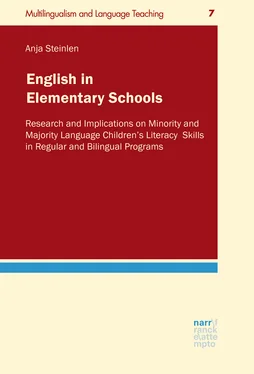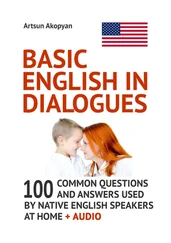The writing process has been characterized in several cognitive models as a complex process with several feedback loops (e.g., Grabe & Kaplan, 1996). In simple terms, the text is planned, formulated and revised several times in accordance with the writing goal. A monitor controls for language (i.e., for linguistic-stylistic means) and content. Finally, the writer’s environment affects this process, in particular with respect to the writing task, the audience and the writer’s personal requirements (e.g., Thaler, 2012). Writing thus depends to a large extent on reading skills, because the process of composing a text always involves reading and rereading of the unfolding text (e.g., Myhill & Fisher, 2010).
Other fundamentals of successful writing include a positive attitude towards writing, topic knowledge, the ability to rapidly access lexical items, knowledge of text features, writing strategies, cognitive skills, visual-spatial performance and, in addition, spelling skills and strategies (see Myhill & Fisher, 2010). During their development, children progress from the level of copying familiar structures to recognizing and reproducing text structures. With respect to the elementary school context, evaluations of writing proficiency usually rely on components such as spelling, punctuation, vocabulary and grammar (e.g., Rathvon, 2004).
There are many models which illustrate the development of L1 writing. The classical model by Hayes & Flower (1980) describes writing as consisting of three primary processes—planning, translating (i.e., the production of text), and reviewing—all operating under executive control within the constraints of the external task environment and the writer’s long term memory. Although the model has been revisited and revised over the years (Hayes, 1996, 2006), it has retained its cognitive character as well as its influence on the field. Berninger & Swanson (1994) revised the Hayes & Flower (1980) model to highlight the challenges that young or immature writers come to face during writing. According to the authors, two sub-processes at the translating level are particularly challenging for developing writers, namely transcription (e.g., handwriting and spelling) and text generation at the word, sentence and discourse level. As long as these processes (plus higher order executive processes such as planning and revising) are not automated, they compete for limited working memory resources during writing, and such competition for resources affects young writers’ products (e.g., De La Paz & McCutchen, 2016).
Since spelling has been mentioned to constitute an important part in assessing young learners’ writing, one of the many stage models for spelling development (e.g., Bear & Templeton, 1998; Gentry, 2000) is presented in the following: Peregoy & Boyle (2013: 208ff.) differentiate four developmental stages or levels, namely the prephonetic, phonetic, transitional, and conventional level. Prephonetic spelling consists of letters or letter-like forms which do not yet represent speech sounds, i.e., children do not yet understand the alphabetic principle that a letter or letter sequence represents a speech sound. Next, children move through the phonetic spelling level, which is characterized by one-to-one correspondence between sounds and letters. Transitional spellers then extend their knowledge beyond the phonetic aspects of spelling and begin to include conventional spellings that are not strictly phonetic and may be spelling 60 to 90% of words correctly in their writing. Finally, at the conventional spelling level, most words are spelled conventionally and correctly.
Similarly to L2 reading, L2 writing differs from L1 writing. Learners have been found to be less efficient and slower in L2 than L1 writing (e.g., Cook & Bassetti, 2005). The reasons for these differences are manifold, ranging from differences in the writing systems of the L1 and the L2, to comprehension and memorization problems due to insufficient L2 word decoding. L2 texts are also often shorter and include more errors than L1 texts. Many of these errors are due to L1 transfer, which may be orthographic, grammatical, lexical or discourse-related (e.g., Leki, Cumming & Silva, 2008). Among others, predictors of successful L2 writing include L2 proficiency, the type of orthographies involved and (as in L1 writing) phonological awareness, rapid naming, and verbal memory (e.g., Geva, 2006). Other, less language-related factors relate to topic familiarity and mode, i.e., the type of writing involved (e.g., Hussein & Mohammad, 2011).
Regarding the development of L2 writing, Peregoy & Boyle (2013: 210) point out that for young learners, it is very similar to L1 writing (with the prephonetic stage being skipped). In other words, children’s L2 writing also progresses from words and sentences to texts. There are, however, restrictions in children’s L2 text production due to their limited knowledge of L2 grammar, vocabulary and idiomatic expressions. Furthermore, L1 spelling strategies will transfer partially to L2 writing, relating to, for example, the capitalization of letters (Odlin, 1989, see also Steinlen & Piske, 2020). It has been emphasized by many authors that the more children read or are read to in the L2, the easier it will be for them to write (e.g., Krashen, 1982; Peregoy & Boyle, 2013).
In the past, the analysis of L2 writing has often been restricted to the analysis of accuracy, whereas nowadays evaluations of elementary schoolers’ L2 texts mainly focus on the same components as that of their L1 texts, namely spelling, punctuation, vocabulary and grammar, which constitute the main sources of transfer (e.g., Pinter, 2006). For example, young German learners of English often use German spelling for English words (e.g., * instead of and German words and German syntax in English sentences as in * (e.g., BIG-Studie, 2015; Burmeister, 2010; Rymarczyk, 2010, 2016). Such interferences exist particularly for writers with low levels of proficiency in the L2, who often rely heavily on their first language resources (see more on foreign language spelling in the elementary school classroom in chapter 7.7).
2.1.5 Some problems relating to phoneme-grapheme correspondences in German and English
English and German belong to the West Germanic language family and share many similarities regarding phonology, spelling, morphology, lexis, syntax and the alphabet as their writing system, and are, therefore, characterized as typologically similar languages (e.g., Genesee & Jared, 2008; Frisch, 2013). However, contrastive analyses also recognize many differences in these areas (see König & Gast, 2009 for a detailed description of these linguistic differences). The English spelling system, therefore, poses many problems for beginning learners whose L1 is German (e.g., Frisch, 2013). For example, the German writing system is rather transparent (shallow) with relatively regular phoneme-grapheme correspondences (following the Orthographic Depth Hypothesis , e.g., Frost, 2005). In German, the letter combination usually corresponds to the sound /ʃ/ (e.g., Schuh, Tisch, Asche ). English, though, exhibits many irregular phoneme-grapheme correspondences and it is, therefore, considered a deep (opaque) writing system. For example, the sound /ʃ/ may be spelt (shoe), (nation), (machine), (sure), (issue), (social) or (ocean), to name just a few (e.g., Eckert & Barry, 2002).
The different orthographic characteristics of German and English often lead to interlingual transfer in the spelling performance of students learning English. In particular, the deep orthography of the English language also influences the less complex German written language, and transfer effects are assumed (and found) because students apply specific spelling strategies of their L1 to the target language. Such strategies may include the phonemic route to spelling (where the L2 words are spelt like they sound, e.g. * instead of ), the visual route to spelling (where the L2 words, particularly familiar and high-frequency ones, are retrieved as a whole, using visual imagery of the word, e.g. ) and the use of metalinguistic knowledge, which includes knowledge about the L2 and its irregularities and regularities, for example when two words share the same root but are pronounced differently (e.g., and , e.g., Frisch, 2013; James & Klein, 1994; Reichart Wallrabenstein, 2004).
Читать дальше












